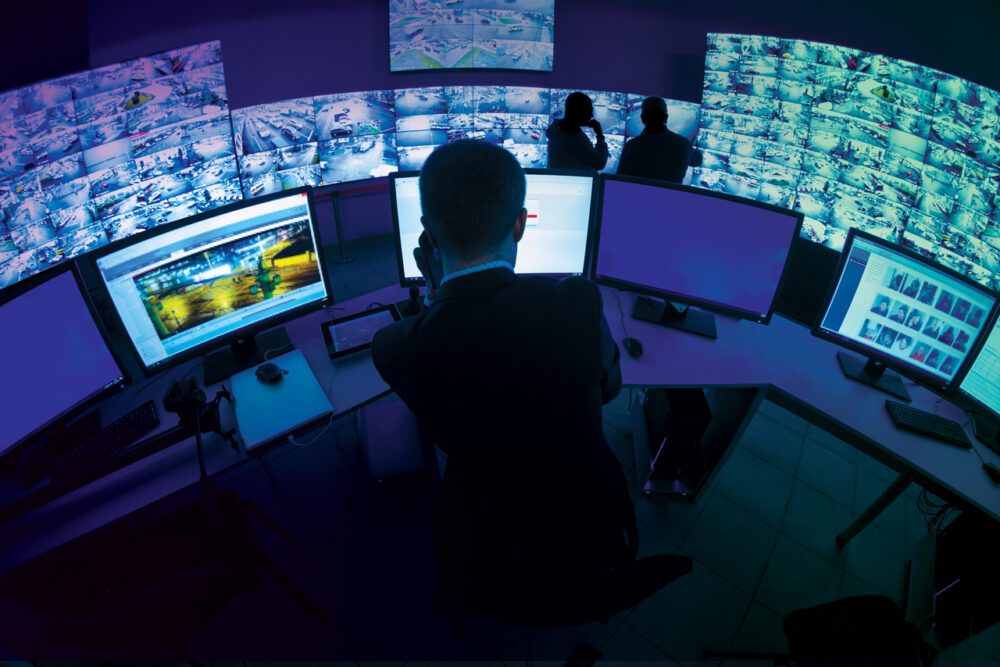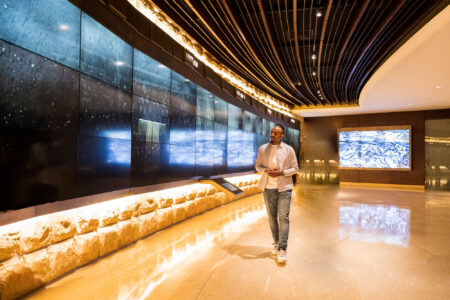July 11, 2023
The power of one – multiple benefits from centralized AV control

Efficient control of audio-visual (AV) systems is critical for almost every enterprise and educational campus today. Centralized solutions for AV control offer a multitude of advantages, resulting in improved efficiency and notable cost reductions.
A centralized AV control system provides unified control, which allows effortless management and control of diverse AV devices. Displays, projectors, sound systems, lighting, and other in-room systems such as blinds and heating, can all be controlled via a single interface. This removes the complexities that typically come with the management of multiple control systems and technologies, enabling smooth and integrated control operations in multiple spaces and even multiple sites. Organizations gain higher operational efficiency, shorter setup times, and consistent, dependable control experiences across their premises.
Boosting user experience
In retail, the customer is always king. And when it comes to audio-visual systems, as any AV manager knows, it’s the user who reigns supreme. Easy use, with a minimal learning curve, is fundamental to both the user experience and the ongoing support workload of the AV or IT department.
That’s why one of the most significant benefits of centralized AV control lies in its impact on user experience. Having a centralized control interface enables users to effortlessly control and interact with AV equipment in various spaces through a consistent, customized interface that can be accessed from any device. With technical hurdles removed, staff can concentrate on their primary tasks, instead of managing the AV equipment. With streamlined AV control organizations can optimize productivity, promote collaboration and efficient workflows, and increase user satisfaction.
Reducing operational costs
Businesses and educational institutions often also find that implementing a centralized AV control system can drive substantial cost savings. It reduces labor costs by dramatically reducing or eliminating the need to provide onsite support and maintenance, as much of it can be done remotely. Additionally, remote monitoring and troubleshooting further reduces downtime and other service disruptions that can be both costly and aggravating.
Furthermore, because centralized AV control enables organizations to get more use and uptime from their AV systems, they can allocate resources more efficiently, reducing both equipment purchases and energy consumption.
Centralized control also makes an AV system inherently scalable, opening the way to long-term financial benefits, along with cost-savings within individual spaces and buildings, and even across multiple sites.
Centralized control in action
The experience of the Mandel Foundation, which works to cultivate leaders in the education, public and non-profit sectors, is an excellent example of how the benefits of centralized control can play out in a real-world implementation. The foundation needed to equip classrooms, meeting rooms, and a large auditorium with user-friendly AV systems. Even before construction on the new site began, Kramer’s experts worked closely with the Mandel Foundation’s IT team in planning a comprehensive audio-visual solution that covered display and collaboration devices (screens, cameras, speakers, microphones and more) in classrooms, the main auditorium, and even digital signage in public spaces.
The entire project was pulled together by the Kramer Control system, allowing for centralized management of the rooms, including real-time alerts and the ability to initiate system upgrades or provide an immediate response to possible malfunctions.
Oren Sharon, CEO, Or Lashir, the integrator that assisted with the project noted the value to end users: “We made sure that everything would be unified. That means if someone enters class one, two or three, they come across the same solution.”
Centralized control on the cloud
Centralized AV control does not have to be cloud-based but, with the growing adoption of cloud technologies across almost every aspect of business and education, it’s fast becoming the norm. As one of the first companies to introduce cloud-based control, Kramer has also lead the way in taking centralized AV control to the cloud.
Our cloud-based Kramer Control platform for room/space control and management enables users to operate any room with ease through a simple touch interface. The intuitive, drag-and-drop interface makes it easy to install, configure, and modify the control system – whether for a single room or a large enterprise or campus.
A final thought
There’s no doubt that centralized AV control provides huge value to enterprises and educational institutions. By adopting a centralized AV control system, organizations can streamline their control processes, improve user experiences, and boost their operational efficiency. Embracing the capabilities of centralized AV control will elevate control operations today and enable you to scale your AV solution as your needs grow in the future.







